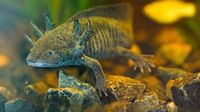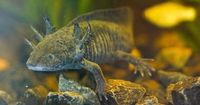In the heart of Mexico City, scientists are wading through ancient canals, straining buckets of water and peering into the murky depths—not in search of a lost treasure, but for the faintest genetic traces of a creature once so abundant that locals could simply scoop it from the water by hand. That creature is the axolotl, a large salamander with feathery gills and a perpetual smile, sometimes called the "Mexican walking fish" (though it’s all amphibian, not fish). Today, this enigmatic animal has become so rare in the wild that its continued existence in its native habitat teeters on the edge of myth.
According to the Associated Press, just sixty years ago, residents of a canal-crossed borough in Mexico City could pluck axolotls straight from the water with ease. The canals of Xochimilco, a UNESCO World Heritage site, once teemed with these salamanders. Fast forward to August 2025, and the situation is starkly different: it’s almost impossible to find an axolotl in the wild. Their numbers have plummeted, and their home has shrunk to a handful of isolated pockets within the sprawling metropolis.
But hope, as it often does, floats. On August 11, 2025, scientists from a local university began filtering the waters of Mexico City’s canals for traces of axolotl DNA—a cutting-edge approach that could offer a second chance for a species on the brink. Rather than relying on the near-impossible task of spotting a live axolotl, researchers are searching for environmental DNA (eDNA), the genetic material that animals leave behind in their environment through skin cells, mucus, or waste. This technique, which has revolutionized wildlife monitoring around the world, allows scientists to detect the presence of elusive or rare species without ever laying eyes on them.
Why has the axolotl, once so familiar, become so rare? The story is a tangled one, woven from threads of urbanization, pollution, invasive species, and the relentless expansion of Mexico City. The canals and lakes that once provided a perfect home for the axolotl have been drained, filled, or polluted as the city grew. According to the Associated Press, the very water that sustained the salamanders now threatens them, choked with runoff, garbage, and chemicals. Add to that the introduction of non-native fish that compete for food and prey on axolotl eggs, and it’s little wonder the salamander has all but vanished from its ancestral home.
The axolotl’s plight is not just a local tragedy—it’s a global concern. The animal is famous in scientific circles for its remarkable regenerative abilities. Unlike most creatures, the axolotl can regrow entire limbs, parts of its heart, and even sections of its brain. Researchers around the world study these salamanders in hopes of unlocking secrets that could one day revolutionize medicine. Yet, as the BBC and other outlets have noted, the irony is bitter: while axolotls thrive in laboratory aquariums, their wild cousins are slipping away.
On February 11, 2025, an axolotl was observed swimming in an aquarium at the Xochimilco Ecological Park in Mexico City, a poignant reminder of what’s at stake. Aquariums and conservation centers have become the last refuges for the species, but scientists warn that captive populations, no matter how carefully managed, cannot replace the richness and resilience of a wild population. The canals of Xochimilco are more than just a backdrop—they are the evolutionary cradle of the axolotl, shaped by millennia of adaptation to a unique environment.
The search for axolotl DNA in the wild is not just about counting survivors. Detecting eDNA could reveal hidden populations clinging to existence in overlooked corners of the canal system. If scientists can pinpoint where axolotls still persist, targeted conservation efforts—such as habitat restoration, pollution control, and the removal of invasive species—have a better shot at success. The stakes are high, but the tools have never been sharper.
It’s not only the axolotls facing environmental stress. While Mexico City’s canals are being scrutinized for traces of salamander DNA, a very different kind of alert has been issued far to the north. As of August 12, 2025, a multi-day heat event is gripping parts of Ontario, Canada, with daytime highs soaring to 32 to 35 degrees Celsius and humidex values reaching a sweltering 37 to 42. Overnight lows have hovered between 20 and 23 degrees Celsius, offering little respite from the relentless heat. Environment Canada has issued heat warnings, cautioning residents about the elevated risks of heat illnesses such as heat stroke and heat exhaustion.
Authorities are urging people to take action to protect themselves and those around them. The advice is clear: check on older adults, those living alone, and anyone at greater risk of heat illness. Watch for early warning signs like headache, nausea, dizziness, thirst, dark urine, and intense fatigue. If heat stroke is suspected—marked by red and hot skin, confusion, or a change in consciousness—immediate medical attention is critical. In the meantime, moving to a cool place, removing extra clothing, and applying cold water or ice packs can help.
To cope with the heat, officials recommend drinking water often—even before feeling thirsty—closing blinds or shades, and seeking out air-conditioned spaces or shaded parks. Never leave people or pets inside parked vehicles, and always check before locking up. For those whose homes are too hot, public cooling centers, libraries, or community centers can provide vital relief. Outdoor activities should be scheduled during the coolest parts of the day, and lightweight, light-colored clothing is advised.
There is some relief on the horizon: a cooler air mass is expected to arrive the night of August 12, 2025, likely bringing an end to the heat event. However, eastern Ontario and the Greater Toronto and Hamilton Area could see hot and humid conditions continue into August 13, 2025. Hot and humid air can also worsen air quality, with the Air Quality Health Index approaching high-risk levels.
Both stories—a salamander’s struggle for survival in Mexico City and a heatwave in Ontario—underscore the complex relationship between humans and the environment. Whether it’s the slow disappearance of a beloved amphibian or the acute dangers of extreme weather, the message is clear: our actions ripple outwards, often in ways we don’t expect. The search for axolotl DNA in Mexico City is a testament to scientific ingenuity and hope, while the response to heat warnings in Canada is a reminder of the immediate steps we must take to protect ourselves and our communities.
As the scientists continue their search in the canals and residents in Ontario seek shelter from the heat, both stories serve as a call to awareness—and, perhaps, to action. In a world where the small and the mighty are equally vulnerable, it’s the choices we make today that will shape the stories of tomorrow.





